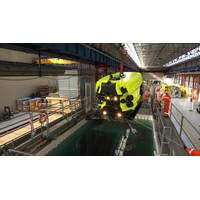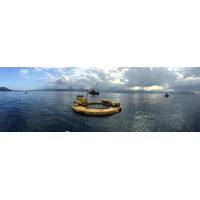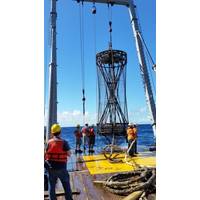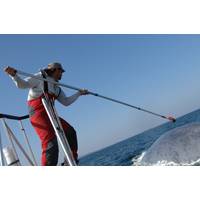Contract Awarded for Undersea Op Training Facility
Naval Facilities Engineering Command (NAVFAC) Hawaii awarded a $54,279,000 firm-fixed-price contract for design and construction of an Undersea Operational Training Facility (UOTC) April 15 to Hensel Phelps Construction Co., of Honolulu, Hawaii. The contract also contains one Furniture, Fixtures and Equipment line item and one unexercised option, which if awarded would increase cumulative contract value to $57,494,949.The work to be performed provides for an UOTC that will support a variety of functions including operator and undersea vehicle training via the use of a combat training tank, and applied

MTR100: Five "Ones to Watch"
are UV (sunlight) and marine growth resistant, and the system still generates power in relatively calm sea states, says Hjetland. A system with one winch would be just 5m-diameter and weight 10-tonne, with up to 500kW of energy storage on-board.Trials have included operations with the U.S. Naval Facilities Engineering Command, powering external oceanographic subsea sensors – including cameras and sonar systems - that were previously cabled, from a 30m test berth of the Navy’s Wave Energy Test Site (WETS), located offshore of Marine Corps Base Hawaii, near Kaneohe, on Oahu.The system also included
SST Wins $15 Mln Order for Navy Seafloor Cable Project
The Naval Facilities Engineering Command (NAVFAC), Engineering and Expeditionary Warfare Center (EXWC) has awarded a $15 million contract to Sound & Sea Technology, Inc. (SST) to integrate and install an underwater cable system in support of the Seismo-Hydroacoustic Data Acquisition System (SHDAS). Under the contract, which represents SST’s largest task order from the Navy, SST will perform engineering tasks including installation of the system and shore landing. Previous work on this project has included the design and installation of the shore facility; design of the underwate

Lifesaver Energy Platform Installed off Hawaii
months of assembly, testing and integration, Sound & Sea Technology, Inc. (SST) successfully installed the Lifesaver Energy Platform (LEP) at the U.S. Navy's Kaneohe Bay Wave Energy Test Site (WETS) in Hawaii, an offshore infrastructure that was established and is managed by the Naval Facilities Engineering Command, Expeditionary Warfare Center. The Lifesaver Energy Platform is the first Wave Energy Conversion (WEC) device to be deployed at one of the new WETS deep water test berths and supports the Navy's interest in advancing renewable energy for Department of Defense applications. The

SST Completes Engineering Project for the US Navy
at-sea operations for the installation of the North HGMS array, the upgrade of the STAFAC junction box, and the upgrade of the South HGMS array toward a successful outcome. The work is part of an ongoing multiple award contract with the Navy to provide ocean engineering support to the Naval Facilities Engineering Command, Engineering and Expeditionary Warfare Center

U.S. Navy: Marine Mammal Project Breaks New Ground
the study as part of its Marine Mammal Monitoring Program. The report is co-authored by Robin Baird and Daniel Webster of Cascadia Research, Brandon Southall of Southall Environmental Associates, and Stephen Martin of the U.S. Navy. Morgan Richie, the Navy technical representative at Naval Facilities Engineering Command Pacific, provided technical oversight for the project. On five occasions preceding Navy training events the researchers tagged a total of 23 marine mammals. The data from the satellite tags enabled them to track points along the animals' path and, in some cases, due to more sophisticated

Navy Ships in Marine Mammal Research Study
and tagging during training exercises provide valuable data, BRSs that use real-time sonar from warships in a controlled experiment have great potential to help us understand how marine mammals are affected by Navy activities under realistic scenarios at sea," said Dr. Bob Gisiner, Naval Facilities Engineering Command (NAVFAC) program manager for the Navy's Living Marine Resources (LMR) Applied Research Program. Using data tags with suction cups that can remain attached for 24 hours or longer, the team tagged two blue whales, two Risso's dolphins, a fin whale and a Cuvier's beaked whale. To

 December 2025
December 2025





